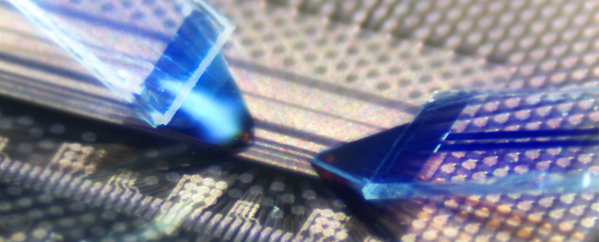
Key features
- Highest-resolution through sub-ps pulse rise time at DUT
- Contact-less, non-invasive technology
- Near-field imaging modalities for improved fault localization
- 10x higher spatial resolution compared to all-electronic systems
- Demonstrated defect localization accuracy of +-0.55 µm
The steadily growing complexity of integrated-circuit (IC) technology—for example, emerging 3D through-silicon-via (3D-TSV) technology—is pushing existing inspection and fault-analysis tools to their limits. Among the nondestructive methods, time-domain reflectometry (TDR) is considered to be an exceptionally fast method for fault detection in electronic packages: A short electromagnetic pulse is coupled into a device under test (DUT). Every discontinuity along the transmission path within the DUT causes a part of the test signal to be reflected. By monitoring these reflections in the time domain, it is possible to detect structural defects and distinguish functional from defective structures. The spatial resolution of this approach is limited by the rise time of the test signal - the shorter the rise time, the better the resolution.
However, standard TDR systems are generally based on all-electronic components which is the reason why the test signal rise time is not shorter than 10 ps and the corresponding spatial resolution is typically around 250 µm. Protemics´ optoelectronic technology based on femtosecond laser technology together with ultra-fast TeraSpike microprobes has enabled a dramatic increase in TDR-performance.
Protemics is offering service measurements as well as technology development services.
Please do not hesitate to  for further information or sent us a
for further information or sent us a  .
.